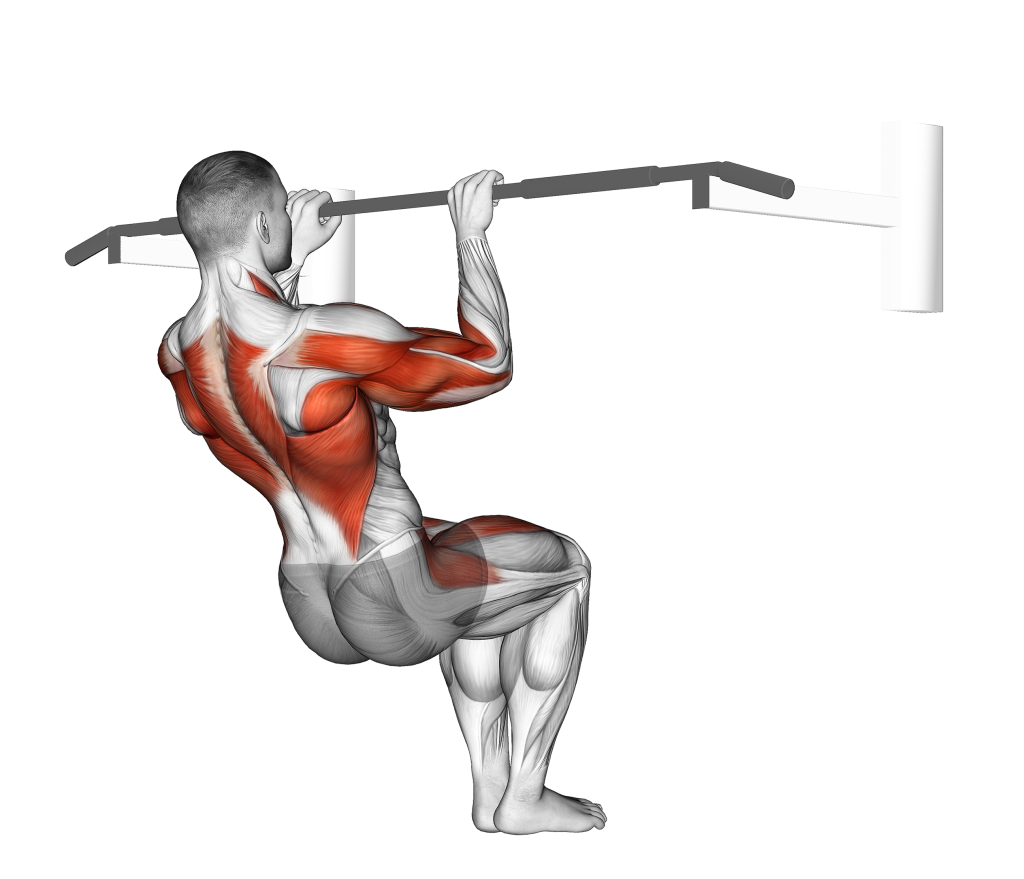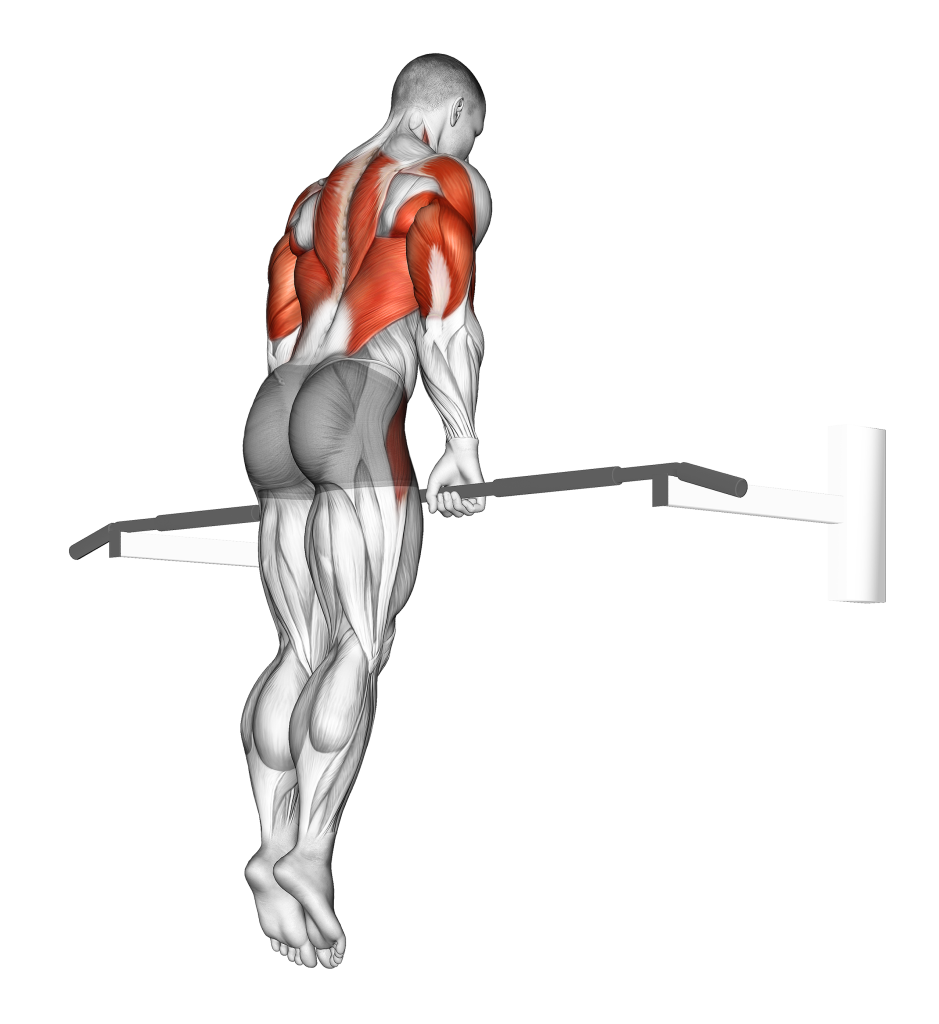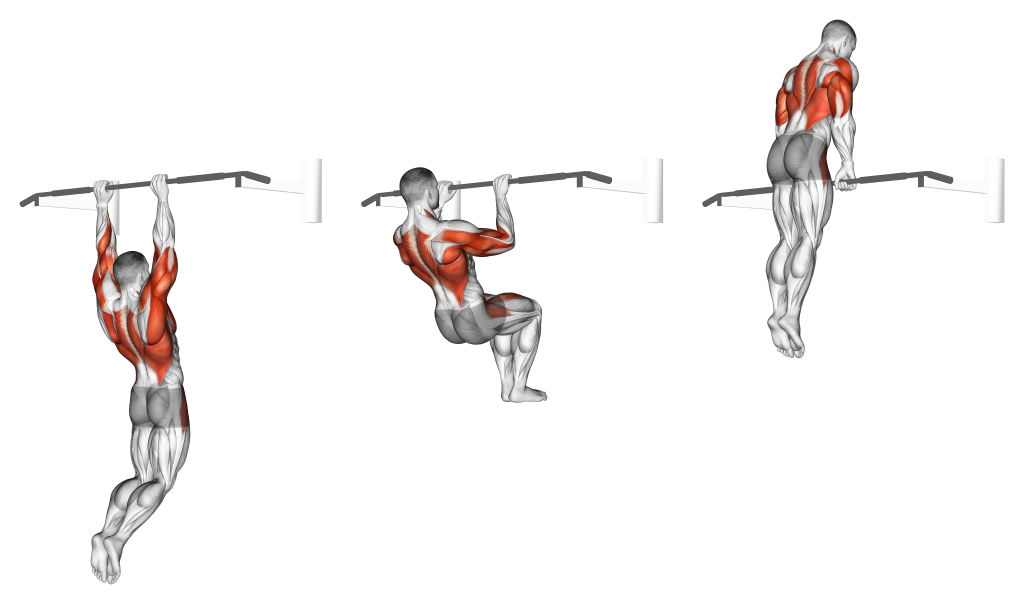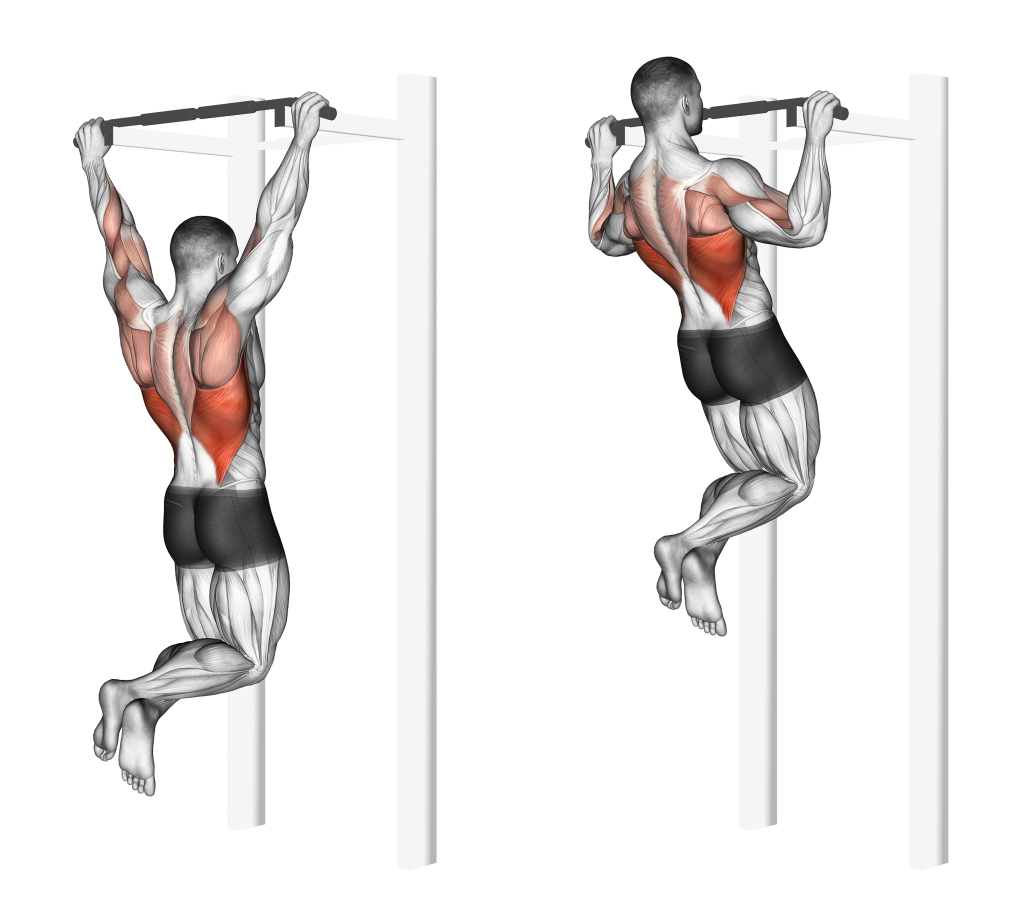Muscle Ups: Benefits, Muscles Worked, and More
The muscle up is as iconic as it is difficult - displaying the exerciser’s raw muscular power and skill in leveraging their own weight against the flow of gravity.
As awe-inspiring as the muscle up is however, being able to perform it requires more than just a strong upper body. To find out how best to reach the much-coveted muscle up (and how to use it in your training), continue reading.
But if you don’t have the time - the short version is that the muscle up is an advanced calisthenic exercise that recruits practically every muscle found in the upper body.
Due to the sheer intensity of each repetition, they are rarely performed for high volume, and will generally be done for the purposes of developing physical power and technical skill.
What are Muscle Ups?
In a more technical sense, muscle ups are a multi-joint compound movement of high intensity, often the purposes of building upper body strength and power in low-volume sets.
Occasionally, they may also be used in athletic training for developing isometric strength or soft athletic skills.

Because of the difficulty involved in performing one, novices to calisthenic training will rarely be able to perform a muscle up, and will generally make use of exercises like the pull-up and chest dip to build up the necessary strength and skill to do so.
Regardless of whether an exerciser is training to perform a muscle up or is already capable of it - the fact that it trains nearly the entirety of the upper body means that more advanced training programming will be required, unless a full body calisthenic workout is being followed.
Who Should do Muscle Ups?
Muscle ups are an advanced bodyweight exercise, and novices should avoid attempting them until they are capable of performing similar exercises in a safe manner.
In particular however, athletes, functional fitness enthusiasts and other types of individuals who require significant upper body explosiveness will find the muscle up to be most suitable.
How to do a Muscle Up
To perform a repetition of the muscle up, the exerciser will hang from a pull-up bar in the dead hang position, hands set in an overhand grip and slightly wider than shoulder-width apart.

Then, performing the movement as explosively as possible, the lifter will perform a pull-up by bending at the elbows and drawing their chest towards the bar in a rapid fashion.
Unlike conventional pull-ups, this is done with a significant amount of momentum and speed.

As the head rises over the pull-up bar, the lifter will quickly draw their forearms over the bar by flexing the muscles therein.
As they do this, they will lean the torso forwards and over the pull-up bar as well, the elbows straightening beneath the torso and turning the movement into a sort of straight bar dip.

Once the pull-up bar is parallel with the waist, the repetition is considered complete, and the lifter will return to the dead hang stance to perform further repetitions.
Note that this is specifically referring to the strict bar muscle up, as the ring muscle up requires a somewhat different stance and is considerably more difficult.
Combing these movements:
What Muscles Do Muscle Ups Work?
Muscle ups are the very definition of a compound exercise, recruiting more than a single muscle group at once.
In actuality, muscle ups work nearly every muscle found in the upper body, and as such each muscle must be classified according to the manner in which they are contracted and their role in the exercise.

Muscles recruited in a dynamic capacity and to high intensity are referred to as primary mover muscles, whereas those recruited to a lesser intensity are known as the secondary mover muscles.
Of course, those recruited in an isometric manner are referred to as stabilizers.
Primary Mover Muscles
The primary mover muscles featured in each repetition of the muscle up are the; latissimus dorsi, biceps brachii, the pectoral muscles and the triceps brachii.
Secondary Mover Muscles
Other muscles recruited in a more incidental but nonetheless dynamic capacity are the deltoids (particularly the posterior and anterior heads), the trapezius, the serratus anterior, the rhomboids and teres muscle group, as well as the brachioradialis muscle if the lifter prefers a more narrow hand placement.
Stabilizing Muscles
In terms of isometric contraction, the muscles of the core, erector spinae and forearms all play a vital stabilizing role throughout the entire range of motion.
What are the Benefits of Muscle Ups?
Apart from more general benefits like improved mobility and cardiovascular function, regularly performing muscle ups will also offer several other benefits associated with upper body force development and athletic ability.
Unparalleled Explosiveness and Power Development
In comparison to most other calisthenic exercises, there are few capable of matching the pure explosiveness and power that is characteristic of the muscle up.
With the appropriate form and programming, exercisers will be able to maximize their rate of force output from nearly all muscles located in the upper body.
This is particularly useful for athletes and martial artists desiring improved muscular power without the use of any sort of resistance training equipment.
Builds Both Sides of the Torso Simultaneously
Unlike many other exercises that are constrained to only one direction of force (such as push or pull), the muscle up is capable of training the entirety of the upper body in a simultaneous manner, as it quite literally combines two different exercises into a single fluid movement.
While considerably more intense, this also means that the lifter can save time and better train themselves to utilize their upper body musculature in a similar fashion.
Carryover to Many Athletic Activities, Including Other Strength Exercises
The muscle up is almost universal in its applicability to other athletic activities.
Be it in the case of a martial artist, gymnast or even a weightlifter wishing to improve their bench press and barbell row - the muscle up will feature significant carryover therein.
Not only do muscle ups help build the physical strength and power needed by many athletes, but they also help reinforce a number of soft skills and mechanics that are also greatly utilized in said activities.
Teaches Bodily Control, Coordination and Other Soft Skills
Although the exerciser will need to already possess an advanced level of bodily control, balance and technical knowledge when performing a muscle up, there is no doubt that regularly doing so will only further hone the exerciser’s skills - allowing them to function better as an athlete as a whole.
Common Muscle Up Mistakes
As technically complex as the muscle up is, exercisers wishing to truly master its execution should strive to avoid the following mistakes, as they are the most common and are also the most likely to negate the effectiveness of the exercise itself.
Failing to Utilize Momentum
The muscle up is explosive and rapid in nature, meaning that controlled usage of momentum is required in order to perform it properly.
Exercisers attempting to perform the muscle up may be reducing the momentum they are generating out of habit, as many calisthenic exercises of similar characteristics are meant to be performed in a controlled manner.
In order to maximize the safety and effectiveness of the muscle up, lifters should seek to generate power by squeezing their lats and recruiting as many muscle groups in a simultaneous and highly intense fashion - especially during the initial pull beneath the bar, as this is where momentum is most needed.
Losing Control Over Momentum
Just as how failing to utilize momentum can make the muscle up ineffective and dangerous, so too can failing to control said momentum, regardless of how it is generated.
Throughout the entire muscle up range of motion, the forearms, core and deltoids should remain contracted in the role of stabilizers that help direct the body and its subsequent momentum in a tightly controlled path.
This is somewhat more technical than it may sound, as the muscle up will also require control over the lower body during the initial pull - and as such, it is advised that exercisers practice the initial half of the muscle up so as to better reinforce their sense of control.
Rotating the Shoulders Incorrectly
Because the muscle up features a significantly large range of motion and two distinct positions of the humeral bones, exercisers new to the movement may be improperly rotating their shoulders - either through excessive internal rotation during the “dip” portion of the muscle up, or by insufficiently externally rotating them during the “pull-up” portion.
Either case is better practiced by performing either conventional pull-ups or conventional straight bar dips, as attempting to correct shoulder rotation errors by performing the muscle up will lead to injury.
Progression Exercises to the Muscle Up
In cases where the exerciser wishes to perform a muscle up but has yet to build the strength to do so, the following progression exercises may be practiced so as to help them reach their goals.
Note that these exercises are arranged in chronological order, meaning that the first exercises are meant to build the foundation for the next ones, and skipping a step can potentially lead to injury or poor results.
1. The Pull-Up and the Straight Bar Dip
In essence, one can break down the muscle up into two component exercises; the conventional pull-up and the straight bar dip.

Knowing this, it is no stretch of logic to say that building the necessary technical familiarity and strength to perform a muscle up is best achieved by first practicing with its component movements.
Once the exerciser is consistently able to perform both pull-ups and straight bar dips for full sets, they may attempt to transition to easier variations of the muscle up so as to build further understanding of its execution.
2. High Pull-Ups
For exercisers that do not wish to immediately switch to muscle up variations, they may further practice with the high pull-up.
The high pull-up is simply a conventional pull-up that ends with the lifter raising themselves until the bar is parallel with the waist - or a less explosive version of the first half of a muscle up repetition.
When performed slowly and with muscle ups as the goal, the high pull-up will not only build the necessary strength to pull oneself over the bar, but also help the exerciser understand how to transition to the dip portion of the muscle up.
3. Jumping Muscle Up
Regardless of whether the exerciser has chosen to perform high pull-ups or not, the next step is to begin practicing the jumping muscle up - of which is simply a conventional muscle up with the added force of the exerciser jumping from the floor (or from a platform) so as to make the movement easier.
The jumping muscle up serves two purposes in the path to a full muscle up.
Apart from the more obvious strengthening of the body, it will also build the exerciser’s confidence and capacity to control momentum as they are in a suspended state.
Once the exerciser is consistently able to perform jumping muscle ups in a smooth and stable manner, they may switch to kipping muscle ups or directly attempt a full muscle up, if they are confident in their strength.
4. Kipping Muscle Up
The kipping muscle up is similar to the jumping muscle up in the way that the lower body acts as a form of mechanical assistance to the muscles of the upper body.
Rather than leaping from the floor or a platform however, the exerciser will instead swing from their lower body so as to generate momentum before proceeding with the muscle up as normal.
The idea behind transitioning from the jumping muscle up to the kipping muscle up is simple; the kipping muscle up involves less force generated by the lower body, and as such is a gradual progression of difficulty in both a muscular and technical sense.
Once the exerciser can consistently perform kipping muscle ups, it is likely that they are ready for the real thing - although caution should still be maintained, and a professional coach present so as to better assess the exerciser’s performance.
Frequently Asked Questions (FAQ)
What are Muscle Ups Good for?
Muscle ups are a highly effective exercise employed for a variety of purposes, be it strengthening of the upper body, practicing bodily control or developing the necessary skills for high-level athletic activity.
Why are Muscle Ups so Hard?
Muscle ups are hard because they quite literally leverage the body’s own weight against itself as it is in a highly disadvantageous position.
That, and the fact that nearly all muscles in the upper body are contracted simultaneously make the muscle up one of the most difficult bodyweight exercises out there.
How do Beginners do Muscle Ups?
In truth, they don’t.
It is unsafe for novice exercisers to attempt to perform muscle ups, and instead it is better for them to first build up the necessary strength and technical knowledge through pull-ups and straight bar dips.
In Conclusion
The muscle up is as effective as it is impressive, and there is no doubting that any individual capable of performing multiple muscle ups is advanced in their training.
If you can’t perform a muscle up or are too afraid to try - don’t worry, very few actually can without the necessary guidance.
Athletic coaching is the best route to take when muscle ups are among your training goals, as individualized progression programs will help you reach the muscle up in a far more efficient and safe manner.
References
1. Chapman, Douglas. Potterf, Kimberly. (Nov 30, 2013) “Training for the CrossFit Games: A Year of Programming Used to Train Julie Foucher, The 2nd Fittest Woman on Earth, CrossFit Games 2012” Createspace Independent Publishing. ISBN: 1494204371, 9781494204372

